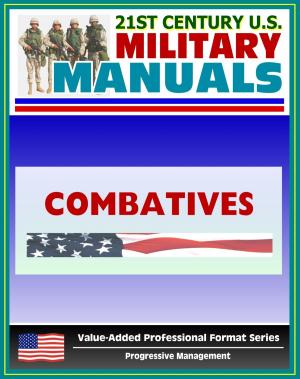The Contracting Support Brigade (CSB): Is It Capable of Sustaining Tempo and Combat Power in the Operational Environment? Afghanistan and Operation Enduring Freedom, Army Sustainment Capability
Nonfiction, History, Military, United States| Author: | Progressive Management | ISBN: | 9781370796496 |
| Publisher: | Progressive Management | Publication: | February 19, 2017 |
| Imprint: | Smashwords Edition | Language: | English |
| Author: | Progressive Management |
| ISBN: | 9781370796496 |
| Publisher: | Progressive Management |
| Publication: | February 19, 2017 |
| Imprint: | Smashwords Edition |
| Language: | English |
This excellent report has been professionally converted for accurate flowing-text e-book format reproduction. The operational commander has the responsibility to link tactical actions in time, space, and purpose to achieve the policy-maker's strategic objectives. Combat power and operational initiative sustained by tempo set the conditions for the decisive action that explicates these tactics. However, these tasks require a capable sustainment architecture that is flexible, responsive, and adaptive to not keep pace with, but instead to facilitate the warfighter's pursuit of the initiative. The costs and build-up required for operational logistics may not align with the temporal and spatial constraints of the mission. In the phase 0 and fiscally constrained operational environment, the Contracting Support Brigade (CSB) can spearhead the operations required to conduct theater-opening, establish initial capability, and posture the warfighter for decisive action. Thus, the operational commander must understand the capabilities and limitations of the CSB. This monograph explains and contrasts both variables and argues that the CSB must expand immediately to meet doctrinal expectations. This expansion of capability will ensure the CSB adequately supports the operational commander in the generation of combat power, sustainment of tempo, and maximization of operational reach.
The US Government Accountability Office (GAO), other government agencies, and individual military service components have identified consistent and systemic challenges to maximizing the performance and efficiency of government contracting. However, the US Army as the land proponent for Unified Action (UA) retains robust, but specified sustainment responsibility for Army and joint forces. Thus, the unique, but un-isolated challenges that the Army contracting community must overcome to execute OCS in the future operational environment punctuate the significance of this study. This monograph centers on the Army CSB's capability to support the CENTCOM area of responsibility (AOR), specifically, OEF-A. The CSB, serving as an operational contracting headquarters, provides the operational-to-tactical and operational-to-strategic links for theater and external support contracting. Depending on operational requirements and constraints, the CSB may surpass its role as an extension of the sustainment warfighting function and become the primary sustainment capability to the Army commander's center(s) of gravity. Therefore, the limitations and shortcomings in the CSB's overall capability transcend into that of the commander's combat power, tempo, and operational reach. This monograph attempts to identify those limitations and their implications to recommend potential solutions.
This excellent report has been professionally converted for accurate flowing-text e-book format reproduction. The operational commander has the responsibility to link tactical actions in time, space, and purpose to achieve the policy-maker's strategic objectives. Combat power and operational initiative sustained by tempo set the conditions for the decisive action that explicates these tactics. However, these tasks require a capable sustainment architecture that is flexible, responsive, and adaptive to not keep pace with, but instead to facilitate the warfighter's pursuit of the initiative. The costs and build-up required for operational logistics may not align with the temporal and spatial constraints of the mission. In the phase 0 and fiscally constrained operational environment, the Contracting Support Brigade (CSB) can spearhead the operations required to conduct theater-opening, establish initial capability, and posture the warfighter for decisive action. Thus, the operational commander must understand the capabilities and limitations of the CSB. This monograph explains and contrasts both variables and argues that the CSB must expand immediately to meet doctrinal expectations. This expansion of capability will ensure the CSB adequately supports the operational commander in the generation of combat power, sustainment of tempo, and maximization of operational reach.
The US Government Accountability Office (GAO), other government agencies, and individual military service components have identified consistent and systemic challenges to maximizing the performance and efficiency of government contracting. However, the US Army as the land proponent for Unified Action (UA) retains robust, but specified sustainment responsibility for Army and joint forces. Thus, the unique, but un-isolated challenges that the Army contracting community must overcome to execute OCS in the future operational environment punctuate the significance of this study. This monograph centers on the Army CSB's capability to support the CENTCOM area of responsibility (AOR), specifically, OEF-A. The CSB, serving as an operational contracting headquarters, provides the operational-to-tactical and operational-to-strategic links for theater and external support contracting. Depending on operational requirements and constraints, the CSB may surpass its role as an extension of the sustainment warfighting function and become the primary sustainment capability to the Army commander's center(s) of gravity. Therefore, the limitations and shortcomings in the CSB's overall capability transcend into that of the commander's combat power, tempo, and operational reach. This monograph attempts to identify those limitations and their implications to recommend potential solutions.















